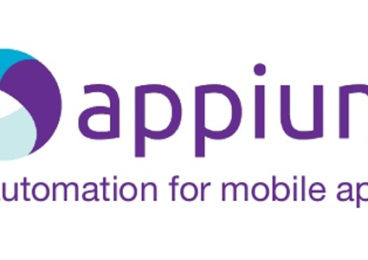
One Year In: Technology Success Stories from the Pandemic

This time last year, US companies were forced to face a new and unsettling reality: business as usual was no longer an option. I wrote then about how businesses could shift their operations and adopt new technology to adjust to the pandemic.
In the 12 months since, I’ve had the opportunity to help several companies make remarkable pivots to adapt to the new normal.
Here are three success stories from the past year, along with tips for how other businesses can thrive through adversity.
A Single Source of Truth Makes Life Easier & Decisions Faster for a Healthcare Company
This particular client is a leading healthcare company that coordinates therapy services for its patients. Despite growing fast over the last decade, at this time last year the company’s data was spread out across different systems, and its employees were still processing data manually.
For example: Billing data was stored in one system, separate from other required patient data. So whenever the analysts needed that data, they downloaded it into separate Excel spreadsheets and consolidated it so they could manipulate and analyze it.
Besides being time-consuming, these practices left the company with an incomplete picture of the people it served: patient details lived in one system, billing and invoices in another, scheduling in yet another.
When manual errors crept in, the numbers didn’t line up, which meant frustrations for everyone. When employees suddenly couldn’t walk over to each other’s desks to talk through problems, those frustrations grew.
Our solution was to help the company move all of its data to a cloud data warehouse. This warehouse serves as a single source of truth for the company that employees can access from anywhere with additional security and governance policies in place.
Breaking down the company’s data silos made it possible to automate many processes (including invoicing) and all but eliminate human error. In addition to these process improvements, we also created dashboards that make it easy for executives to observe trends at a glance and identify next best actions.
Already, this company is able to operate more efficiently and make decisions faster. What’s exciting is that these changes are only the beginning of its data transformation journey. Moving forward, we’ll combine data from clinical, marketing, sales, payment, employment, and other systems.
When we’ve done that, the company’s data will provide it with complete visibility of its operations, enabling it to grow seamlessly and devise new strategies.
Better Data Warehousing Yields Higher Revenue for an Insurance Company
Another company I worked with this year is an insurance agency that helps small employers and groups tap into the insurance buying power that bigger organizations have.
Its growth strategy in recent years centered on acquiring smaller agencies. While this proved effective, each new acquisition meant the company also acquired a new system. This left the company with data being stored in vastly different ways and across different systems.
What’s more, the data itself was complex: for example, each agency it acquired had different commission structures. The result was that there was no simple way to track revenue, policies, and sales performance. This made it difficult to develop uniform metrics and KPIs and evaluate how various agencies were performing. There was no way to identify which groups and agents were performing best and to apply their practices across the company to grow revenue.
The solution we introduced involves unifying the agency’s data and engineering the data to swiftly analyze the company’s operations. We connected the company’s data sources to its data warehouse, cleaning and standardizing it in the process. Now, that warehouse acts as a single source of truth for the company’s most important data. We also added an analytical layer to the warehouse so that its dashboards are updated quickly, enhancing its visibility of its agencies.
C-suite executives can now see at a glance how the company is performing, as well as…
● The number of people working.
● Current operational revenue.
● Production revenue.
● Who’s getting paid what in commissions.
With this data readily available and easy to process, executives can see what’s working and what’s not, and make decisions based on those hard facts. As a result, the agency has already grown and increased its revenue.
Unified Data Yields Faster Insights and Better Strategic Decisions for an Alcoholic Beverage Brand
When the pandemic hit, this company found that sales surged in some places and fell off in others. But because its sales and revenue data were stored in outdated systems, leaders couldn’t observe those changes in real time.
This lack of visibility made it impossible for them to adapt to customers’ changing habits.
The solution we developed involves a data warehouse. In the initial phase of the project, we pulled data from the brand’s old systems into the new data warehouse. We also automated the process of integrating new data into the data warehouse.
We built a dashboard from the data integrated in the data warehouse to generate real-time performance reports. Now, executives can see in seconds on how they’re growing by region and where sales are highest.
Right away, the brand was able to see how the pandemic was affecting their sales: in city centers, where customers could easily walk to retailers, sales were way up. In suburbs, where customers were now shopping less often and more strategically, sales were down. The company shifted stocking patterns to accommodate increased demand in cities and saw revenue grow.
In phase two, we hope to introduce security and governance to the brand’s data so that more stakeholders (sales managers, store operators, etc.) can access it and use it to make better, faster decisions to drive growth.
Two Data Takeaways for Success in Any Business
Business disruptions come in many varieties. As these three companies demonstrate, two key behaviors can help a brand stay vibrant – and even improve – when those disruptions happen:
- Take action. Initially, all three of these companies were reluctant to undertake major projects during the pandemic. They wanted to wait until things were “back to normal” and we could collaborate in person to overhaul their data. That’s an understandable reaction, but it’s not feasible. For one thing, there’s often no way of knowing how long a disruption will last.
Pausing projects indefinitely can lead to stagnation. If your team is struggling to make changes right now, start small. Aim to complete short-term sprint-like projects. Institute practices (like daily stand-up meetings) that can keep people connected. Without flexibility, you’ll find yourself lagging behind your more nimble competitors.
- Focus on underlying processes and systems. I’ve spoken with many business leaders in the past year who decided against overhauling their data systems during the pandemic. Instead, they opted to focus on the front end of their business. Again, this is understandable: in an all-remote world, your digital storefront has to look great.
But updating the website’s look and feel without updating its back end can lead to frustrating customer experiences. A slick new website implies that your underlying systems are equally slick and up to date. If your teams don’t have ways to share data and conduct seamless handoffs, for example, your customers may end up disappointed and frustrated.
In short: it’s never a bad time to improve your organization’s data!
In Times of Upheaval, Fortune Favors the Bold
When major change shakes up an industry (or an entire planet), business leaders can choose to treat it as a burden or an opportunity. Those who choose the latter path will be the best equipped to survive and thrive moving forward. After all, one of the few things we can be sure about the future is that it will bring change.Curious about how rethinking your company’s data might lead to better business outcomes? Set up a time to talk. We’d love to help you discover what’s possible.







